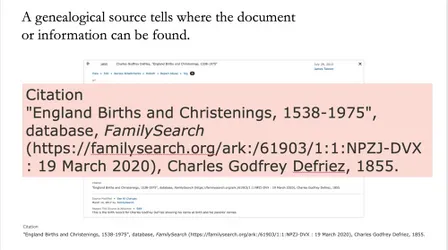
Accuracy and persistence are essential for making any real progress in researching and building your family tree. Supporting your conclusions with pertinent historical documents will help you ensure that your conclusions are correct and the entries of your family tree are accurate.
The consequences of an inaccurate family tree are not obvious. If you make a poor decision when researching a generation, you may end up working on people who are unrelated. Unfortunately, this problem is fairly common.
An accurate family tree is one that is built by using the extensive tools and resources available on family tree websites such as MyHeritage.com. This article points out some of the basic concepts that will help you have an accurate family tree.
Research your ancestors on MyHeritage
What genealogists doWhat genealogists do
A genealogist is a person who searches historical documents online or in libraries and archives for information about individuals and families and then analyzes, organizes, and records the information. The core work of a genealogist involves finding genealogically significant documents, analyzing the information contained in the documents, and then recording that information so others can also view the documents in context.
What constitutes an original document or recordWhat constitutes an original document or record
An original contemporary historical document or record is one that was created at or near the time of an event in your ancestors’ lives by someone who either witnessed the event or had a duty to report the event. All other documents and records that are not directly related to an event in your ancestors’ lives are considered to be secondary.
Useful documents for genealogistsUseful documents for genealogists
Valuable genealogical documents contain historical information about individuals or families.
What constitutes a sourceWhat constitutes a source
A source is a written statement that identifies the exact location where you found your genealogical or historical information and enables other researchers to validate your original research and conclusions.
A genealogically significant historical document is one that contains contemporary information about an individual or a family. A family tree entry is correct when it is consistent with the information in available contemporary historical source documents. When a genealogist finds relevant information, the first step is to record the information and also record where the information was found with a citation. Collectively, references to historical records are referred to as sources.
Genealogical sourceGenealogical source
See also: how to write genealogy source citations
A citation is a formal, consistent way of identifying the source document or record so that other genealogists can find the record or document. Most online genealogy websites and desktop programs had a way to record the source of the information entered into their programs. As you begin learning about genealogical research, you will often hear the admonition to “cite your sources.” Providing information about where you obtained the information you enter into your family tree lets other genealogists know where you got the information you entered. It is also helpful to other researchers to explain your thought process so they can understand your evaluation of the reliability of the historical document or record.
Here is an example of a citation:

Family tree accuracyFamily tree accuracy
When you examine your own or another’s family tree, you should look to see if the information recorded is supported by cited sources to historical documents and records. Your sources tell everyone where you got the information and they are more likely to agree with you. However, long lists of sources do not help when the records cited do not happen to contain the information entered in your family tree. Whether a person's parents have been correctly identified should always be supported by a source record showing a parent/child relationship. Absent such a record, no matter how many other records are attached as sources, there is no support for adding parents for that individual. However, family trees are only as accurate as the historical sources cited.
When you enter information about one of your family members in a public or private family tree someone is going to look at the entry and decide if they agree or not. If you support your conclusions by citing your sources and explaining your thought process it will help to enhance their reliability. Information in a family tree without a cited source is considered to be unreliable and questionable. However, long lists of sources do not help when the records cited do not happen to contain the information entered in your family tree.
Family trees and DNAFamily trees and DNA
Genealogical DNA testing is based on scientific genetic principles of inheritance. Taking a DNA test from a reliable genealogical family tree website, such as MyHeritage.com, can enhance the accuracy of your family tree by showing you that a genetic relationship exists between the people you have discovered by researching historical records and documents.
+See also=+See also=
Explore more about family tree accuracyExplore more about family tree accuracy
Here are some helpful resources for learning more about helping your family tree to be more accurate.
- MyHeritage family tree
- Keep Your Family Tree Accurate With the Tree Consistency Checker at MyHeritage Knowledge Base
- How Far Back Do DNA Ethnicity Estimates Go? at MyHeritage Knowledge Base
- How Accurate Are Online Family Trees? by James Tanner at Genealogy’s Star blog
- How Do You Know If Your Genealogy Is Correct? at BYU Family History Library YouTube channel
- Analyzing Your Family Tree at Legacy Tree Genealogists
- Build an ACCURATE MyHeritage Family Tree - 3 Ways at Family History Fanatics YouTube channel

